
COPYRIGHTS AND RESTRICTIONS AND CONDITIONS OF THIS WEBSITE
The Ethical Method of Repair
The Attention is in the Details
the Lost and FOUND series
RON BARBAGALLO:
THE RESEARCH LIBRARY AT ANIMATION ART CONSERVATION
DECADES OF SCIENTIFIC EXPLORATION AND EXPERIENCE
CONSERVATION SCIENCE

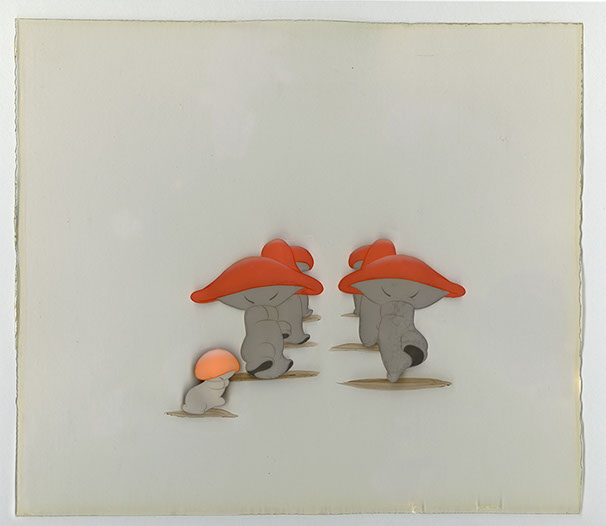
Hop Low and six Mushroom Dancers, The Nutcracker Suite, Fantasia (1940)
Hop Low and six Mushroom Dancers, The Nutcracker Suite, Fantasia (1940)
1 - 2
<
>
In 2002, the cel painting measured: 11 26/32 ̈ along the bottom edge and 10 35/64 ̈ along its left side.
In 2017, the cel painting measured: 11 21/32 ̈ along the bottom edge and 10 27/64 ̈ along its left side.
Images from The Research Library at Animation Art Conservation, animation time lapse: 15 years
THE SHRINKING TRUTH ABOUT DISNEY plastic
The Society for Animation Studies (SAS) 31st conference
held at the Univesidade Lusófona de Lisboa, Lisbon, Portugal, June 19, 2019
The Research Library at Animation Art Conservation announced on June 19, 2019 a research project focusing on the plastics used to make Walt Disney Production Cels. A project 24 years in the making, the data released on June 19, 2019 picks up where Ron Barbagallo, the Director of The Research Library at Animation Art Conservation, left off back in 1995 when through the Photographic Materials Group of the American Institute for Conservation (AIC), Barbagallo published a hypothesis about Disney production cels made of Di-Acetate: "Particularly apparent are the significant amounts of sheet shrinkage.
24 years after that hypothesis was published, Barbagallo harvested data from a group of seven Disney Di-Acetate cels sold to the public. These cels were from the same collection and experienced the same environmental conditions. The production cels and backgrounds were cleaned and stored in housings and in boxes made with materials that reflect the best possible standards for the care of this type of art. For 20 years, the rehoused collection was stored between 68 - 72° Fahrenheit. The relative humidity ranged between 38 - 42%. 20 years later, it was found unilaterally that each piece of plastic in the collection experienced the same loss: approximately 1/8th of an inch (give or take) in mass over a 14-18 year time period while being stored in what were recommended conditions...
CONSERVATION SCIENCE
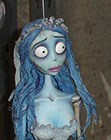
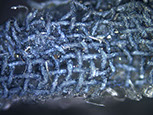


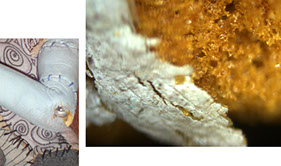
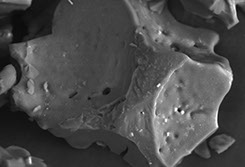
Corpse Bride Dress, second image from top left: Blue fibers: Reflected light micrograph of surface at 50x
Third image from top left: White fibers at 1000x
Fourth image from top left: Reflected light micrograph of hair strand at 50x
Bottom row: Sally from Disney's Nightmare Before Christmas, natural foam rubber degradation.
Center: Reflected light micrograph of blue painted side and foam interior at 50x.
Far Right: Foam at 600x.
FOR OVER 30 YEARS, Ron Barbagallo has had a front row seat like no other.
Ron Barbagallo has literally watched the painted plastics used to make Disney animation cels, backgrounds and drawings age right before his eyes. Beside him the entire time, consulting conservation scientist Michele Derrick has been analyzing the Disney plastics, paints and paper Barbagallo has taken into his care, and their 25 plus year collaboration and the physical assets (behavioral testing, preservation reports, color samples and a large image archive) and the scientific data Barbagallo and Derrick have amassed is unique.
In addition and in response to their focus on painted Disney Cels, Barbagallo and Derrick have collaborated on the scientific study of painted plastics artifacts as diverse as the Tim Burton and Christopher Nolan Batsuits, plastic artifacts that survived under WTC One after 9/11, the puppets made for Nightmare Before Christmas, James and the Giant Peach and Corpse Bride, plastic tiles made to support Nickelodeon's SpongeBob, and as way of cross reference their work on Disney Cels, the two have explored the chemical differences between Disney animation cels to animation made at Warner Bros., Hanna-Barbera, 20th Century Fox (The Simpsons), UPA, Apple Films, King Features Syndicate, TVC London, Subafilms, inc., Mushi Production (Astro Boy), MGM and other studios.
MICKEY, DONALD, GOOFY & PLUTO, What's Breaking Up That Old Gang of Mine?
For more than 25 years, Ron Barbagallo has been reattaching paint fragments that have fractured from Walt Disney production cels.
A Quantitative look at the "Cel" Created for Walt Disney Animated Films and its Deterioration
Topics in Photographic Preservation, Volume 6, Pages: 98-105,
Compiler: Robin E. Siegel
© 1995, Photographic Materials Group
of the American Institute for Conservation of Historic & Artistic Works
In 1995 Ron Barbagallo gave a talk at the National Gallery of Art in Washington DC. Afterwards he summarized the talk and contributed this article to the AIC's Photographic Materials Group. It is a history of the paints, the type Cellulose Nitrate and the many types of Cellulose Acetates used to make Walt Disney Production Cels.

